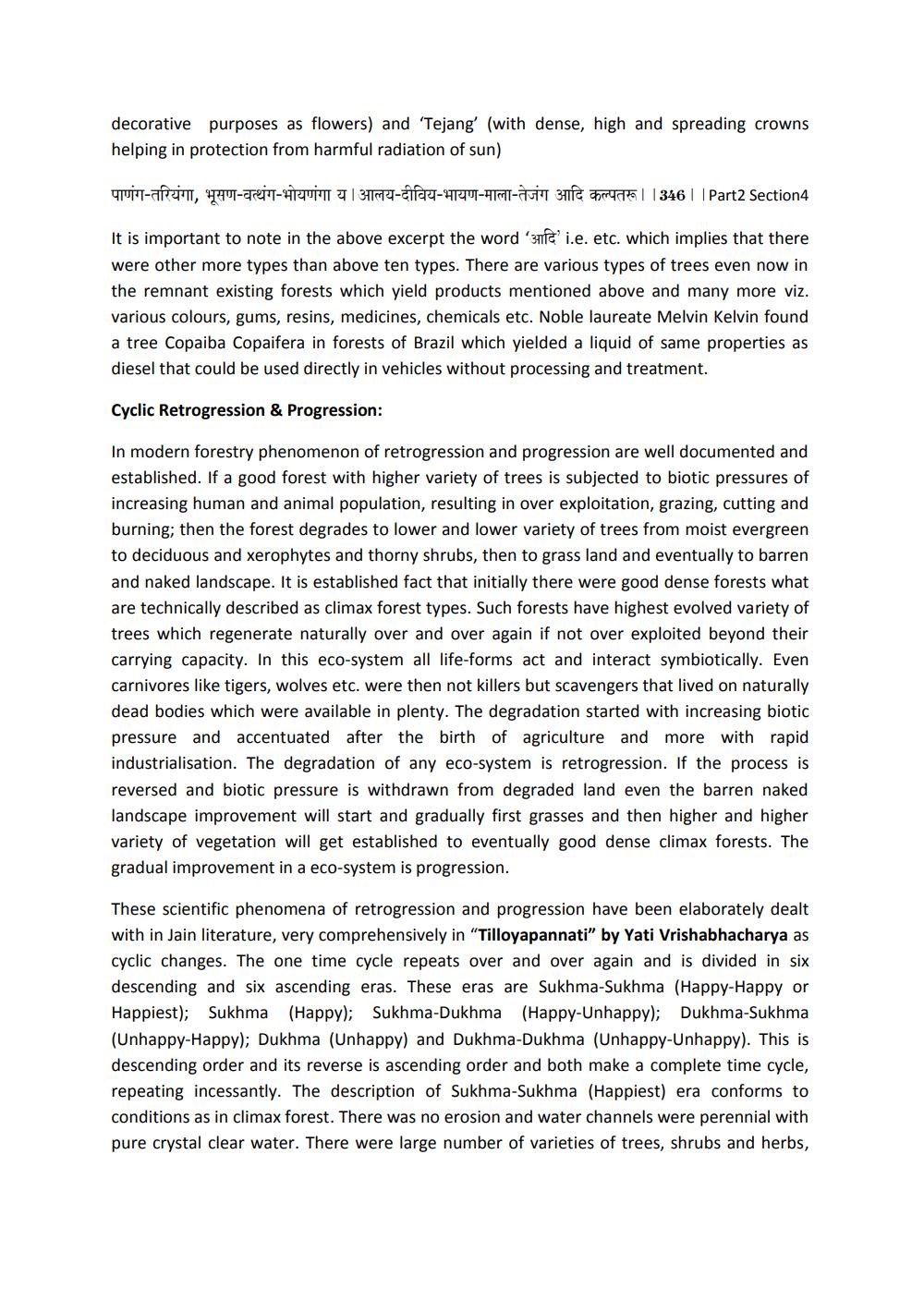Book Title: Kalpavrikshas The Benevolent Trees Author(s): Publisher: ZZZ Unknown View full book textPage 3
________________ decorative purposes as flowers) and 'Tejang' (with dense, high and spreading crowns helping in protection from harmful radiation of sun) YT-ARII, 441-CP2117-HRUTI 14-alfa-420-HT-it if applicato 346 | Part2 Section 4 It is important to note in the above excerpt the word of i.e. etc. which implies that there were other more types than above ten types. There are various types of trees even now in the remnant existing forests which yield products mentioned above and many more viz. various colours, gums, resins, medicines, chemicals etc. Noble laureate Melvin Kelvin found a tree Copaiba Copaifera in forests of Brazil which yielded a liquid of same properties as diesel that could be used directly in vehicles without processing and treatment. Cyclic Retrogression & Progression: In modern forestry phenomenon of retrogression and progression are well documented and established. If a good forest with higher variety of trees is subjected to biotic pressures of increasing human and animal population, resulting in over exploitation, grazing, cutting and burning; then the forest degrades to lower and lower variety of trees from moist evergreen to deciduous and xerophytes and thorny shrubs, then to grass land and eventually to barren and naked landscape. It is established fact that initially there were good dense forests what are technically described as climax forest types. Such forests have highest evolved variety of trees which regenerate naturally over and over again if not over exploited beyond their carrying capacity. In this eco-system all life-forms act and interact symbiotically. Even carnivores like tigers, wolves etc. were then not killers but scavengers that lived on naturally dead bodies which were available in plenty. The degradation started with increasing biotic pressure and accentuated after the birth of agriculture and more with rapid industrialisation. The degradation of any eco-system is retrogression. If the process is reversed and biotic pressure is withdrawn from degraded land even the barren naked landscape improvement will start and gradually first grasses and then higher and higher variety of vegetation will get established to eventually good dense climax forests. The gradual improvement in a eco-system is progression. These scientific phenomena of retrogression and progression have been elaborately dealt with in Jain literature, very comprehensively in "Tilloyapannati" by Yati Vrishabhacharya as cyclic changes. The one time cycle repeats over and over again and is divided in six descending and six ascending eras. These eras are Sukhma-Sukhma (Happy-Happy or Happiest); Sukhma (Happy); Sukhma-Dukhma (Happy-Unhappy); Dukhma-Sukhma (Unhappy-Happy); Dukhma (Unhappy) and Dukhma-Dukhma (Unhappy-Unhappy). This is descending order and its reverse is ascending order and both make a complete time cycle, repeating incessantly. The description of Sukhma-Sukhma (Happiest) era conforms to conditions as in climax forest. There was no erosion and water channels were perennial with pure crystal clear water. There were large number of varieties of trees, shrubs and herbs,Page Navigation
1 2 3 4 5 6 7 8 9
